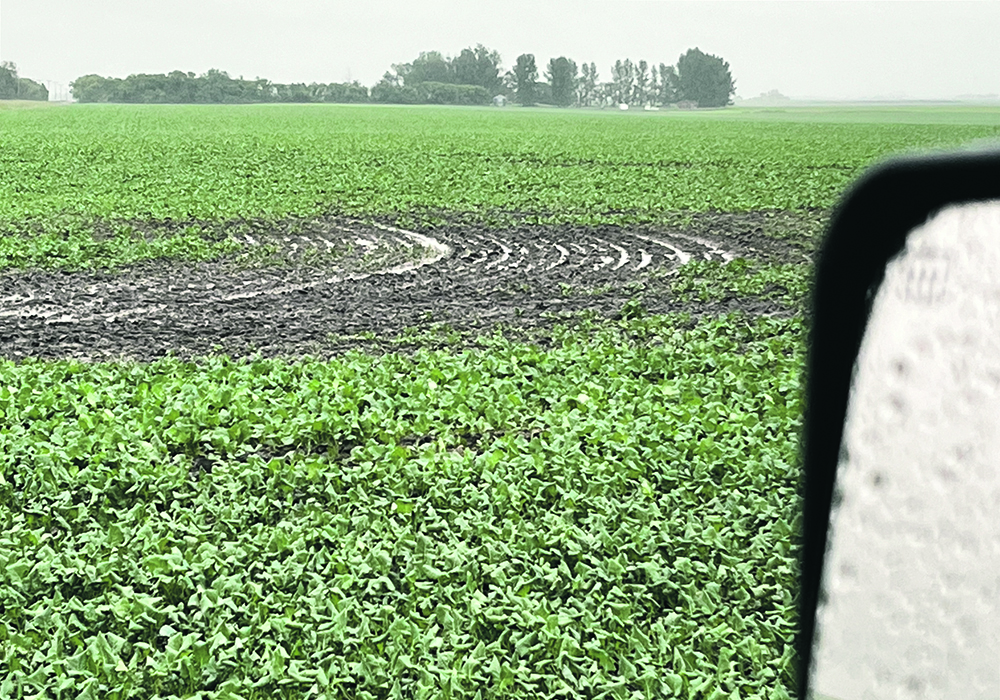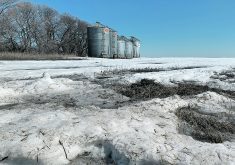Crops in much of Canada and the United States are doing a lot better than last year, thanks to improved moisture through the spring.
And nearly all of the Canadian Prairies and American Midwest were expected to get even more rain June 28-July 3. That system might have delivered excessive amounts in some areas.
While most areas have welcomed spring rain, southern Alberta and southwestern Saskatchewan were dry in most of June. In the United States, parts of southern Minnesota, eastern South Dakota and northern Iowa recently had heavy downpours that caused flooding.
Read Also

China’s grain imports have slumped big-time
China purchased just over 20 million tonnes of wheat, corn, barley and sorghum last year, that is well below the 60 million tonnes purchased in 2021-22.
Back in April, I wrote a column that included what long-term weather models forecasted for spring.
Generally they expected normal spring precipitation accumulations but predicted warmer than normal weather for most of North America.
The heat forecast turned out to be true for much of the U.S. but definitely not for the Canadian Prairies.
The Saskatchewan crop report to June 24 said 42 per cent of oilseeds were behind normal development and 31 per cent of spring cereals were behind. Crops in Manitoba and Alberta could also benefit from warmer temperatures.
Meanwhile, the national newscasts have been dominated by coverage of the heat that enveloped much of the eastern half of United States as well as southern Ontario.
Daily market reports note the market is looking to assess what effect the heat is having on Midwest corn and soybeans.
There is no panic yet.
Through June, the national weekly crop assessment published by the U.S. Department of Agriculture showed corn and soybean conditions to be a little better than the 10 year average for that time of year and significantly better than last year.
The dry weather has helped speed the hard red winter wheat harvest. As of June 23, the Kansas crop was 53 per cent harvested compared to the five-year average of 25 per cent. Oklahoma’s crop was 95 per cent complete, compared to the average of 65 per cent.
The question in the coming weeks in the U.S. will be whether the rainfall can keep up with the needs of corn and soybeans under a hot summer scenario.
Weather models show the U.S. from the Rockies west to the Pacific to be dry in July, but mostly normal rain in the eastern half of the country where the vast majority of the corn, soybean and spring wheat are produced.
August could get dicey, though, with many of the models showing dry weather spreading into the Dakotas and corn belt states.
The models show normal to above normal rainfall in the Canadian Prairies in July and August.
Turning to major crop areas elsewhere in the world, the dryness that affected Ukraine and western Russia a few weeks ago has ended, but the dryness and difficulties over the winter took a toll on the winter wheat crop.
Commodity analysis firm Argus last week estimated Russia’s all-wheat crop at 79.5 million tonnes. Sovecon has pegged the crop at 80.7 million and Ikar at 82 million.
The U.S. Department of Agriculture’s June forecast for Russia was 83 million.
These figures are all much lower, more than 10 million tonnes lower, than the bin buster crops last year and in 2022, although with the carry-in stocks added to current production, the total wheat supply will still be large.
Adjustments in Russia’s forecasts remain possible. It is in the early stage of its winter crop harvest (72 per cent of total production), and spring crop harvest (28 per cent of total crop) is many weeks away.
In Europe, crops in the west have suffered from cool, wet weather while in the southeast it has been warm and dry.
Crop monitor MARS, in its June 24 report, trimmed yield forecasts from its May outlook.
Its soft wheat yield forecast is now equal to the five-year average. Durum yield is forecast at four per cent less than the five-year average and rapeseed is about equal to the average.
The last week of June was expected to be hot throughout Europe, which would help western crops but stress those in the southeast.
China’s winter wheat harvest is mostly complete.
You might have seen reports that the region known as the North China Plain is getting very dry. That is true, but the wheat crop was mature before the rain disappeared.
The government there says almost all the winter wheat crop has been harvested and yields were good.
Corn and soybeans are the summer crops now in the fields, mostly in northeastern China, and growing conditions there in July and August are expected to be warmer than normal but also with good moisture.
Australia’s winter crop seeding is complete. The weather was not great during planting, but in most areas it has improved and generally things look good. Most models show a warm Southern Hemisphere winter there. It could be dry in July, but moisture prospects improve from August onward.















